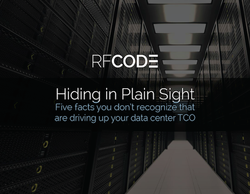Today many companies rely on restructuring, mergers and acquisitions to maximize shareholder value. PwC’s 2015 CEO survey found that over half of the US executives expect to complete a domestic acquisition this year, and globally over half of the executives plan to enter a new strategic alliance or joint venture. Almost a quarter plan to sell a majority interest in a business.
It is each organization’s responsibility to ensure the process runs as smoothly as possible and the recent news that colocation provider Equinix has interrupted Telecity’s merger with Interxion highlights just how critical asset visibility is during the corporate merger and acquisition (M&A) process. Any potential partner or M&A participant will expect detailed information on IT assets, workload efficiency and utilization rates, especially because combining multiple highly sensitive IT environments inefficiently can result in serious management, compliance and financial implications.
 Uniting multiple data centers, each composed of tens of thousands of high-value assets and systems, is challenging enough for the average global enterprise. The potential complexity is even greater when data-driven corporations or IT service providers enter negotiations. Many organizations overlook that M&As impact every line of business.
Uniting multiple data centers, each composed of tens of thousands of high-value assets and systems, is challenging enough for the average global enterprise. The potential complexity is even greater when data-driven corporations or IT service providers enter negotiations. Many organizations overlook that M&As impact every line of business.
For example, both organizations will have IT and facilities departments with different processes, strategic objectives, and operating budgets. Data center availability must be maintained during any corporate restructuring and data center dependent projects need reevaluating to ensure they benefit both businesses equally. Managed services providers and global partnerships should be addressed, as should co-location and outsourced IT investments.
Furthermore, data center consolidation becomes a critical management point, particularly in our age of financial austerity. Operating budgets are already under significant pressure and the CIOs of the two companies will likely have to prove continued commitment to the organization’s growth objectives.
Real-time asset lifecycle management presents a unique opportunity to quantify each facility’s commercial value, environmental efficiency, and current IT utilization. Essentially, an IT department with granular asset data has an appropriate platform to transform the M&A process from an operational challenge into one of business opportunity.
The Ideal Scenario
Finance plays an equally critical role. CFOs are expected to provide evidence of ongoing compliance with international data security regulations, external auditors, and other commercially sensitive governance. The CFO should have the capability to demonstrate the current value of each facility, the expected depreciation rate down to the asset level, planned equipment refresh schedules and the costs involved, as well as past, current and future operating and capital expenditures relating to IT asset management, power, cooling and employee costs.
Clear evidence of current efficiencies and future management programs not only ease the M&A process, but can enhance an organization’s overall value prior to an acquisition agreement. Many data center operating budgets extend into the tens of millions of dollars a year, so any processes or quantifiable data that demonstrate the corporation’s dedication to driving down the total cost of ownership of its facilities strengthens its position during negotiations.
Ultimately M&As should benefit both organizations and raise their competitive position. Real-time asset lifecycle management can help deliver these outcomes for both IT and facilities, but also for the CFO and CEO, who may find themselves under scrutiny from investors and customers to guide their respective companies through the process.
Would you like to learn more about ways in which you can control data center costs? Download our latest eBook, “Hiding in Plain Sight,” and learn about 5 facts you may not realize are driving up your data center Total Cost of Ownership.



